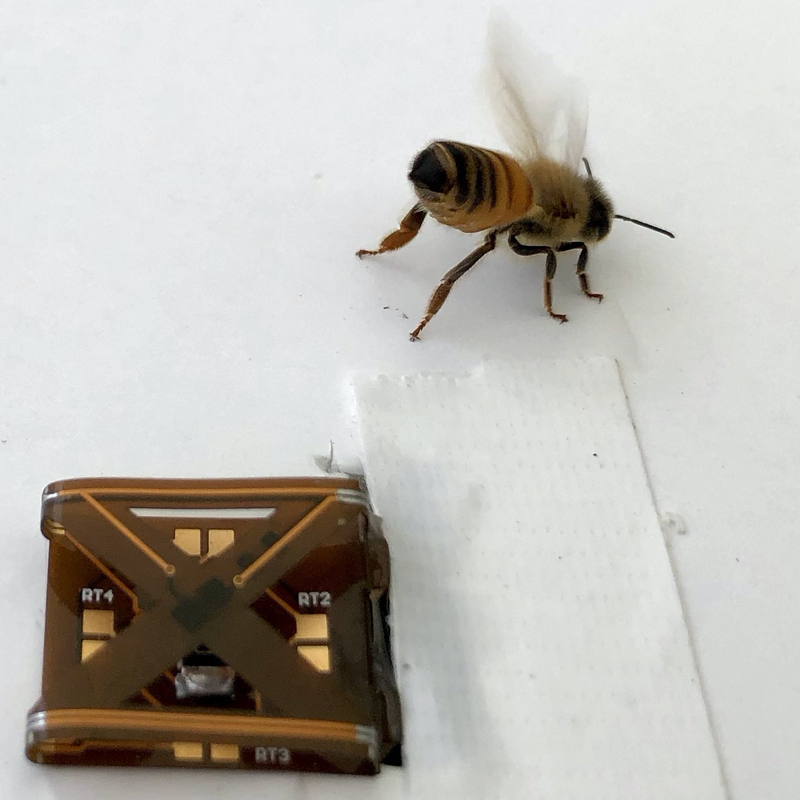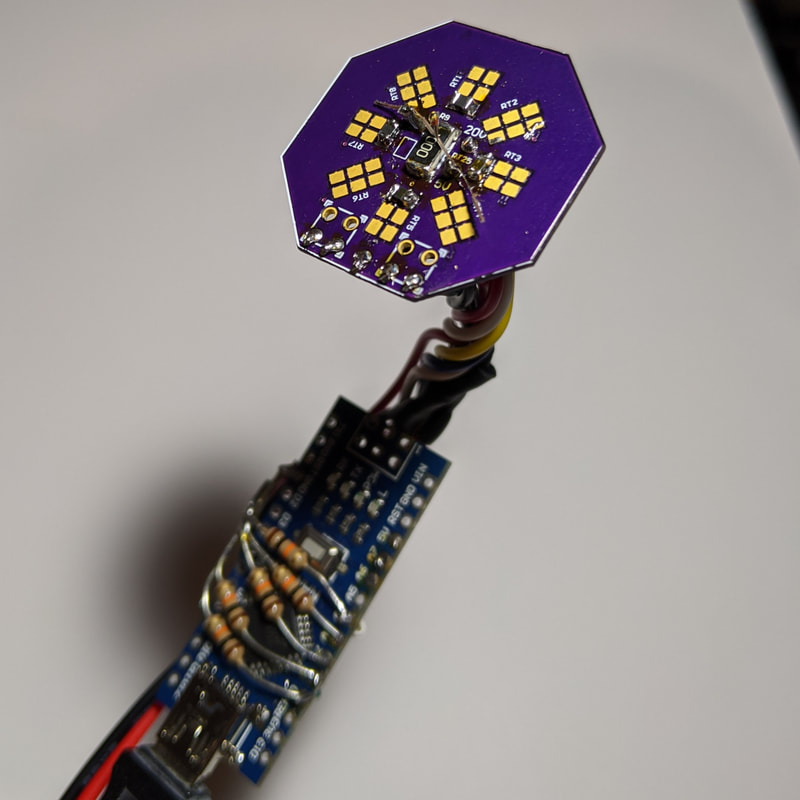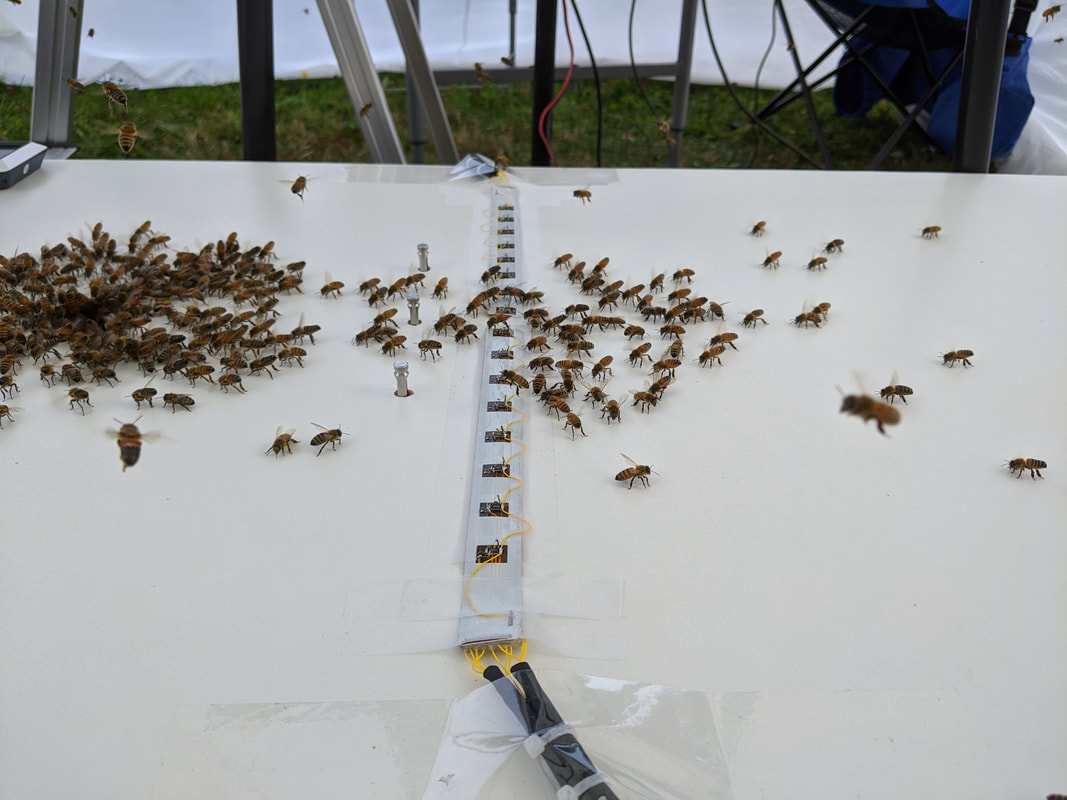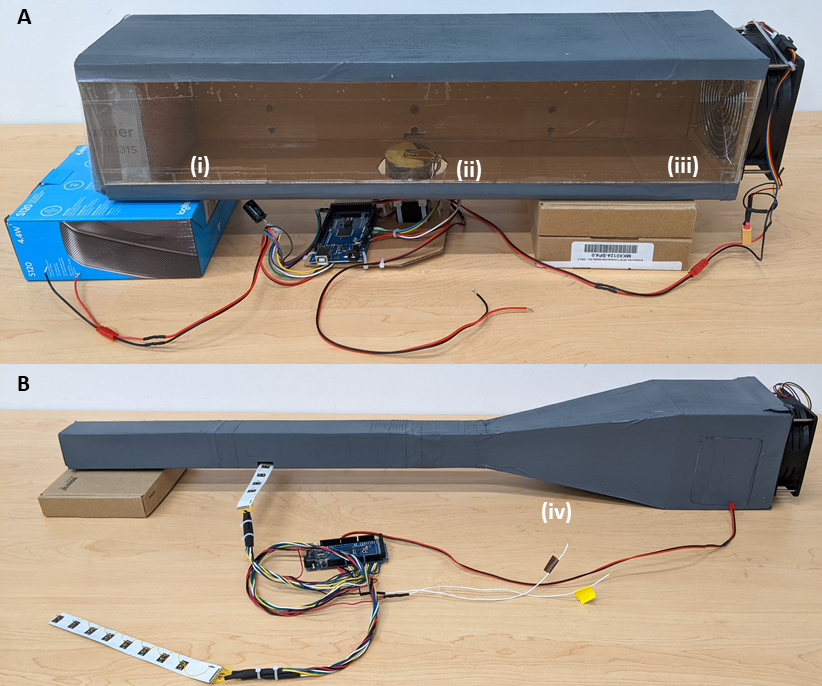I worked on this project for 3 semesters and a summer to develope a sensor that could measure the airflow produced by standing honeybees in a swarming setting. This work ultimately led to a conference presentation in DARS-SWARM 2021 and publication in Springer: Artificial Life and Robotics.
The first semester I designed and prototyped a tiny circuit board based thermal flow sensor. The sensor has two operating modes which ovrlap one another. First, the central heating element produces a bolus of hot air. The thermistor located directly above it then senses the temperature of the air through a resistor divdider circuit, which correlates to the speed of the flow. In still air the sensor will measure a high temperature, but under high flow the hot air will be swept away and the sensor will measure a cooler temperature. The second measurement mode works by the same principle, but to measure the direction of the flow. There are 4 additional surface mount thermistors located in a ring around the heating element. When air blows across the heating element, the hot air will be directed to one or more of these thermistors, causing it to rise in temperature.
That summer I iterated on the design and we begun field tests with a real swarm of honeybees. This version utilized a strip of individual heating element - thermistor pairs. This did not allow for direction information, but instead provided us with a cross section of the flow field on the board. This prototype included an autoamatic data recording system to help with the difficulties of bringing electronics into the field. That summer I learned all about running field experiments with honeybees, from how to handle and transport them to how to best convince them to exhibit the behavior we were trying to study.
Over the following year I again iterated on the design, designed and verified 2 wind tunnels of different velocity ranges, built a testing rig and finally ran experiments to characterize the sensors.



